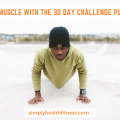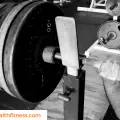
Golf is an interesting sport to strength train for. Single swings make or break a hole, and could ruin a whole tournament. With that much focus on subtle technique and one stroke at a time, what can strength training do to help? How do we structure effective golf workouts?
Today we want to talk about how strength training can help; and specifically how kettlebell training for golf can be useful.
Click here if you need to shop for new kettlebells.
What do Golfers Need Strength Training for?
Here are a few key things that we need to keep in mind when building a great kettlebell workout for golf:
- Strength: this helps you stay safe from injury, as well as being the basis for power and performance – from the swing to the putt.
- Power: rapid force development – perfect for long driving, as well as reducing injury risk.
- Mobility: increased range of motion in your joints, freedom from movement-restrictions and pain, and – of course – reduced injury risk!
- Fitness: increased fitness means consistency on the course, no matter how long you’re going for.
- Co-Ordination: basic muscular control comes from practice, and strength training is a great way to focus on the building blocks of more complicated movements. This is key to building consistency, technical skill, and easier distances into your game.
You might be noticing a pattern here; the main benefits are in keeping joints healthy and safe while improving strength as the basis for driving power.
To get a better understanding of how and why this is relevant, you need to also look at the specific needs of golfers on a joint-to-joint basis. These are going to be the guide to how you should be training each joint, and why.
If you also need expert advice on nutrition, make sure to check out these articles.
Shoulders
The shoulders are at risk in golf through the large number of repetitive movements (swings and strokes), as well as the regular abnormal posture of any stroke.
Training should strengthen all 3 parts of the shoulder (front, lateral, and rear delts), but also improves movement-control and mobility. This keeps them safe and healthy, as well as stronger for full body movements like driving.
Stronger shoulders are going to help with pain-free follow-through and a smoother swing. They can also reduce the risk of injury in the elbow, which is a common golfing injury.
Exercises to consider
Kettlebell overhead press
Kettlebell “Halo”
Scapular and Upper Back
Strong extension in the spine is going to be great for the follow through, as well as addressing some of the shoulder problems mentioned above. It’s also going to reduce the strain that golf places on the body – especially as you age.
The focus here should be on strengthening the muscles that pull the shoulder blades back and down (retraction and depression), as well as strengthening the extension of the upper back. We want to do these while keeping the core active, specifically, to avoid over-compensating for bad mobility.
As with the shoulders, this will help with the follow-through of your swing, keeping your posture strong and allowing you to open up and apply the force from your hips effectively.
Exercises to consider
Kettlebell scap raises
Single-arm kettlebell rows (slowly and with a pause)
Bent-over kettlebell face pull
Kettlebell pullover
Kettlebell upright row
Core
Every athlete needs a strong core and golfers are no exception. However, the demands of golf are uniquely rotational – they involve a ton of rotation through the spine at high speeds and with as much force as possible for those truly enormous drives.
Improving rotational core strength will be key to golf-specific power, but we also need to build stability in all directions so that the spine is safe and healthy. For this reason, we use stability exercises like planks and side planks, as well as rotating exercises.
This will mean stronger drives, could help with control during putting, and will also help keep your hips and knees healthy through high swing volumes.
Exercises to consider
Kettlebell rotations
Turkish Get up
Elbows
Golfer’s elbow isn’t a joke; you’re going to be transferring a lot of force through your arms and the elbow can easily take the brunt of that. Improving the strength of muscles on both sides is going to be key: better tricep and bicep strength are a huge focus for effective golf, as well as longevity.
This is best achieved with a combination of improved shoulder mobility, stronger triceps, and stronger, more-flexible biceps. We do this with balanced pressing and pulling exercises, keeping the elbow strong without building imbalance – which may increase injury risks.
This means pain-free follow-through on swings (just like the other joints in the upper body) and avoiding golfer’s elbow.
Exercises to consider
Overhead tricep extension
Kettlebell towel bicep curl
But most importantly – regular forearm and wrist-elbow prep!
Hips
The hips are the powerhouse of the body and hip extension is where the most force comes from in a drive. We want the hips to be strong and powerful – which is why they are trained regularly and with a combination of slower and faster movements.
The slower work builds muscle and reduces injury risk, as well as improving mobility and control, since the hips are always at-risk for injuries. The faster work helps to build up power in the hips, specifically, for improving the drive and allowing maximal force transfer to the club.
Exercises to consider
Kettlebell swing
Read full article: The benefits of the kettlebell swing
Single-leg kettlebell deadlift (or Romanian deadlift)
Wrists and Forearms
The grip is crucial for golf, with repeated impacts and regular use. A weak grip will leave you under-performing and at-risk for injury. Improving grip strength reduces these problems, and also feeds into a reduced risk of elbow injury, which is a great bonus.
Grip training can be performed in a variety of ways, but kettlebells like this one have built-in grip training through the thickness and texture of the handle, in most cases. Working with this kind of implement is a great way to build grip work into your strength training without even focusing on it.
This is going to keep your grip on the club strong, while also keeping your hard-working hands and elbows healthy.
Exercises to consider
Wrist curls
Kettlebell wrist deadlifts
Wrist rotations
Bottom-up kettlebell press
Towel kettlebell row
Knees
Knees are fiddly and often at risk for injury, regardless of sport. Adding the unusual extension position that comes at the end of a swing only increases that risk if they’re not strong in 3-dimensions.
For this reason, we want to focus on developing the quads and hamstrings equally, producing a healthy knee. This also contributes to powerful hip and leg extension, which are crucial to a great, long drive.
As with the hips, this will focus on a combination of strength/muscle-building exercises, as well as power exercises such as jumps. This transfers over to a stronger swing and can also help to keep the hips and ankles healthy during swings.
Exercises to consider
Goblet squat
Goblet Cossack squat
Ankles
Ankles are often forgotten, but they’re always working, and they are also dealing with the force you put into the ground through a drive. Not to mention the walking, if you’re not running a cart.
Ankle strengthening needs to be focused on stability and we can build this with other exercises that focus on depth and lateral (sideways) movement. These help us prepare the ankle for anything, even if they’re not crucial for performance benefits.
Exercises to consider
Goblet side lunges
Kettlebell lateral step up
Benefits and Advantages of Kettlebell Training
The reason kettlebell training is picking up in popularity again is because it’s “functional” to the core: it’s an unwieldy, heavy object that offers a ton of benefits at once. If you’re trying to get stronger for golf, these are exactly the benefits you’re looking for – especially if you have limited training time.
Kettlebell golf workouts carry many of the typical benefits you’d see with a barbell or dumbbell but with some unique properties that you can take advantage of. Let’s take a look…
Implements: strength training but weirder
The kettlebell is an implement – it’s not designed to be easy to deal with and the challenge of its shape and weight are part of the point.
Unlike a barbell, this weirdness will necessarily involve a ton of deep stabiliser muscles and core muscles you could easily miss otherwise.
We want to look at the kettlebell as a toned down version of the stuff strongmen do: it’s awkward and challenging on purpose. This allows us to perform movements like the kettlebell swing and bottom-up kettlebell press that have awesome stability components.
This kind of training tool is often undervalued: they help you prepare for the rotational, stability, and unpredictable elements of sport.
Convenience: practical factors
The kettlebell is a great way of getting value out of a workout with very little equipment, it takes up almost no space, and it can be transported easily. This makes it a great convenience for training even if you can’t get to a gym or some sort of global pandemic breaks out (what are the odds?).
Because of this, a single kettlebell can be an awesome tool for building the athletic properties we outlined above: strength, power, mobility, fitness, and injury-resilience. We’ve already outlined how these help your game, and it covers everything from better swings to less injuries.
When it comes to a cost-to-benefit analysis, the kettlebell golf workout shines for versatility and convenience.
Full Body Training
You can obviously train your whole body with any weight – or with gymnastics. However, the kettlebell offers some awesome chances to practice full-body resistance training in ways that are useful for golf specifically.
This is clear when we look at the swing or snatch, where the idea is to produce force with the legs and hips, transferring it through the core into the shoulders. It is the same (oversimplified) kinetic chain we want for a strong drive – and a simple, well-controlled put.
These are the kind of specificity we love to see in efficient strength training, and it’s one of the keys to maximising the results of your strength and conditioning training.
Momentum: a unique skillset
Momentum is one of the most underrated aspects of kettlebell training that makes it perfect for golf. Kettlebells are almost unique in offering training that is about producing and controlling momentum – perfect for the strength-building and injury-reducing needs we set out above.
Especially useful in movements like kettlebell swings, where the movements mirror some of the fundamentals of a good golf swing (extension of the knees and hips together). Something you’re going to struggle to achieve with other forms of exercise equipment.
This workout is also a great way of getting a ton of core and conditioning training done in a short space of time – especially if you push the intensity!
Versatility: one weight, many possibilities
Fortunately, we can do almost anything with a kettlebell if the weight is appropriate – you can perform a whole kettlebell workout for golf with just this one piece of equipment.
We can use a kettlebell to build mobility and prevent injury, a way of building muscle around a key joint like the hip, and then use it for power exercises that help improve the golf swing, before finishing off with rotational core exercise to keep the body healthy and balanced.
It might be true of many types of equipment, but the kettlebell has excellent options for almost everything we want from golf strength and conditioning.
Final thoughts
There are dozens of ways to train, and no single option by itself is going to answer every question or solve every problem. However, kettlebell training has an interesting role in strength for golf, and can be a great, convenient option for the budding enthusiast.
We’ve outlined one example of how you might train with a kettlebell for golf, but remember to focus on consistency and long-term development. This is all just a way of improving your game, so don’t let it take the focus off your swing volume and technical development.
Strength sets you up for better long-term success, but it needs to be applied properly and hopefully the advice in this article will help you stay healthy and perform at your best.



